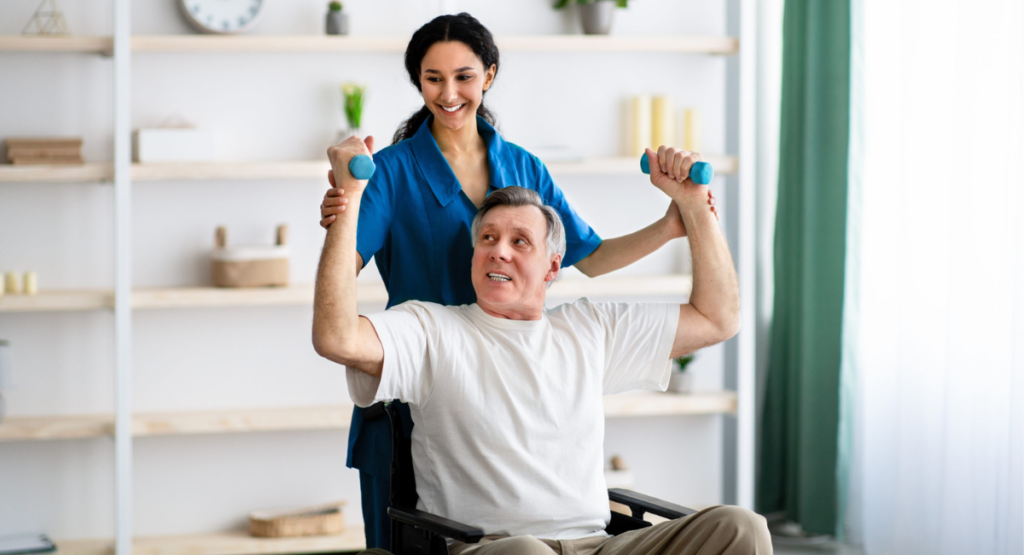Stroke, often described as a “brain attack,” can have devastating effects on individuals, altering their physical abilities and impacting their quality of life. However, within the realm of stroke rehabilitation, there exists a beacon of hope – physiotherapy. This guide aims to illuminate the transformative power of physiotherapy rehabilitation for stroke patients, delving into its multifaceted benefits and holistic approach to recovery. From restoring mobility and functionality to fostering independence and enhancing quality of life, physiotherapy serves as a guiding light on the path to reclaiming health and well-being after stroke. Join us as we explore the invaluable role of physiotherapy in unlocking the journey to recovery for stroke survivors.
Understanding Stroke and Its Impact
Stroke occurs when blood flow to the brain is disrupted, either due to a blockage (ischemic stroke) or bleeding (hemorrhagic stroke). This interruption deprives brain cells of oxygen and nutrients, leading to cell damage and subsequent loss of function. The effects of stroke vary widely depending on factors such as the location and severity of the brain injury. Common impairments experienced by stroke survivors include paralysis or weakness on one side of the body, difficulty speaking or understanding language (aphasia), cognitive deficits, and changes in behavior and emotions.
The Role of Physiotherapy in Stroke Rehabilitation
Physiotherapy, also known as physical therapy, is a crucial component of stroke rehabilitation. It focuses on improving mobility, strength, balance, and coordination through a variety of techniques and interventions. The goals of physiotherapy rehabilitation for stroke patients include:
Restoring Mobility: Physiotherapists employ exercises, stretches, and hands-on techniques to improve muscle strength, flexibility, and range of motion, helping stroke survivors regain the ability to move and perform daily activities.
Preventing Complications: Stroke survivors are at risk of developing secondary complications such as muscle stiffness, contractures, and pressure ulcers due to immobility. Physiotherapy interventions help prevent these complications by promoting regular movement and positioning.
Enhancing Balance and Coordination: Balance and coordination often suffer after a stroke, increasing the risk of falls and injuries. Physiotherapy programs incorporate balance training exercises and coordination drills to improve stability and reduce fall risk.
Facilitating Neuroplasticity: Neuroplasticity, the brain’s ability to reorganize and form new neural connections, plays a crucial role in stroke recovery. Physiotherapy interventions stimulate neuroplasticity by engaging the affected areas of the brain through repetitive movements and tasks, facilitating functional recovery.
Empowering Independence: Ultimately, the goal of physiotherapy rehabilitation is to empower stroke survivors to regain independence and enhance their quality of life. By improving mobility, function, and self-care skills, physiotherapy enables individuals to participate more fully in activities they enjoy and engage in meaningful social interactions.
Benefits of Physiotherapy Rehabilitation for Stroke Patients
Improved Mobility and Functionality
Physiotherapy interventions target specific impairments caused by stroke, such as muscle weakness, spasticity, and loss of coordination. Through tailored exercises and techniques, physiotherapists help stroke survivors regain the ability to walk, stand, reach, and perform other essential movements necessary for daily living.
Reduced Risk of Complications
Immobilisation following a stroke patients can lead to a range of complications, including muscle stiffness, contractures, and pressure ulcers. Physiotherapy rehabilitation focuses on keeping muscles and joints mobile, promoting circulation, and preventing secondary complications that could hinder recovery and overall well-being.
Enhanced Balance and Stability
Balance and coordination are often affected by stroke patients, increasing the risk of falls and injuries. Physiotherapy programs incorporate balance exercises, proprioceptive training, and gait training to improve stability and reduce fall risk, thereby promoting safety and confidence in movement.
Increased Independence in Activities of Daily Living
Regaining independence in activities of daily living, such as dressing, grooming, and bathing, is a significant milestone in stroke recovery. Physiotherapy interventions focus on improving strength, endurance, and functional abilities, enabling stroke survivors to perform these tasks more independently and with greater confidence.
Enhanced Quality of Life
By addressing physical impairments and promoting functional independence, physiotherapy rehabilitation contributes to a higher quality of life for stroke survivors. The ability to engage in meaningful activities, participate in social interactions, and maintain a sense of autonomy fosters a greater sense of well-being and fulfilment.
Conclusion
Physiotherapy rehabilitation offers a lifeline to stroke survivors, providing a comprehensive approach to recovery and rehabilitation. By addressing physical impairments, promoting functional independence, and enhancing overall well-being, physiotherapy plays a vital role in helping stroke survivors reclaim their lives and achieve their full potential. If you or a loved one has experienced a stroke patients, consider incorporating physiotherapy rehabilitation into your recovery journey for optimal outcomes and a brighter future.
We are India’s first comprehensive continuum care provider. We provide multidisciplinary out of hospital care to acute and post-acute and chronically ill patients at our critical care facilities and your home.

